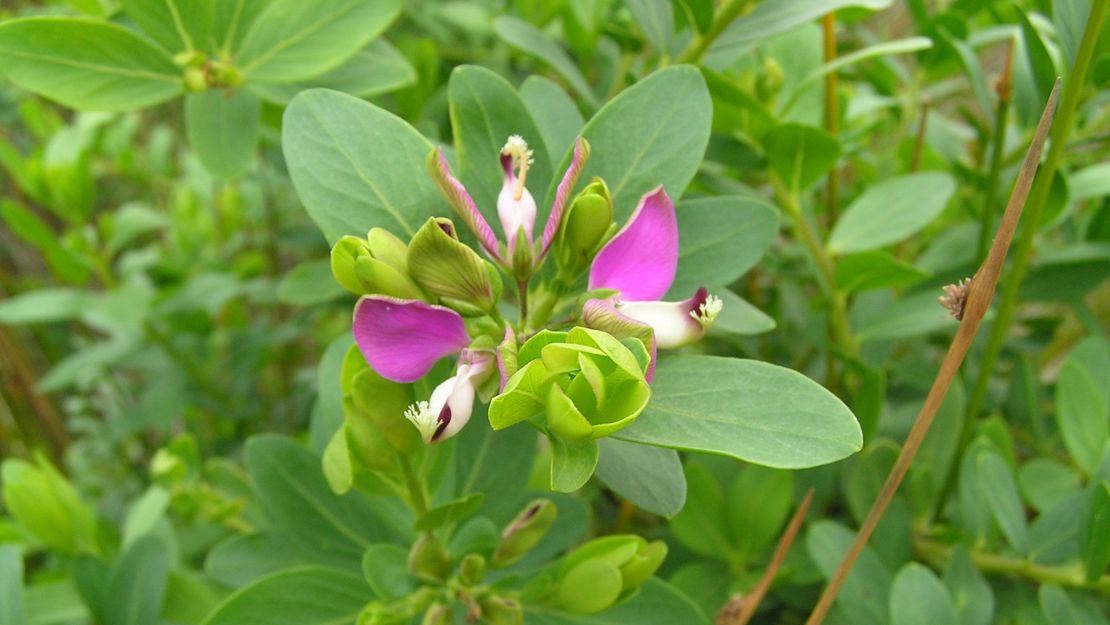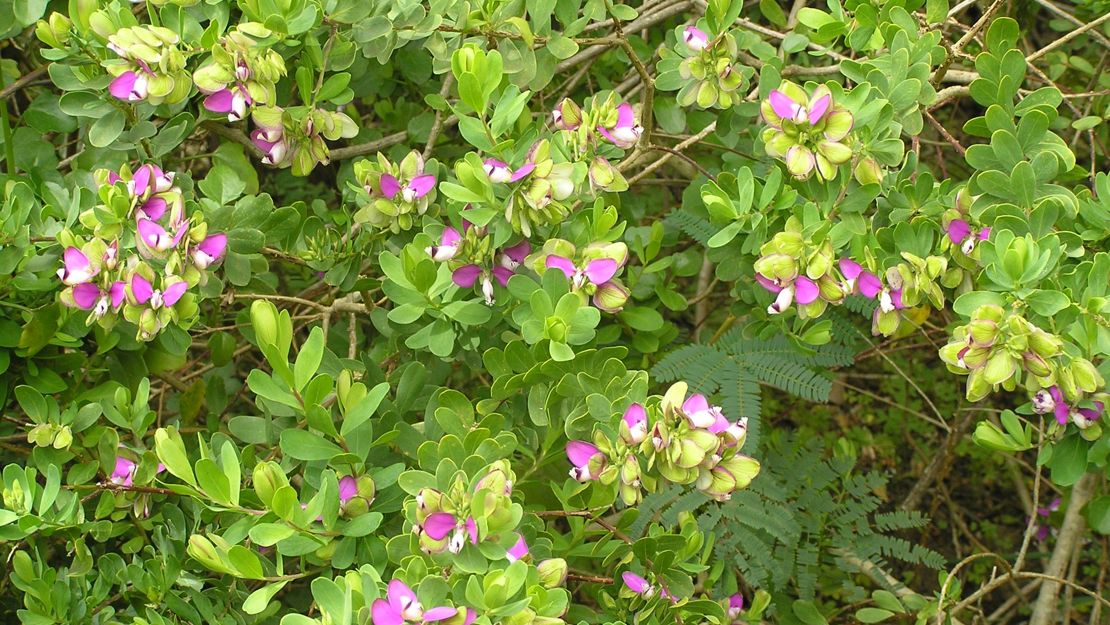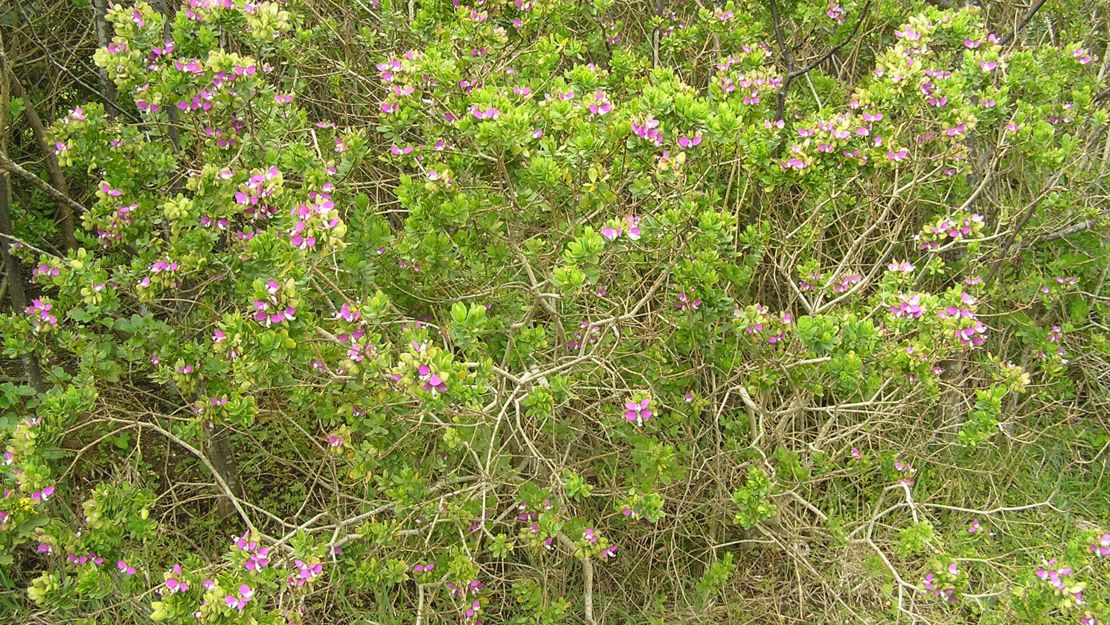Polygala myrtifolia
Sweet pea shrub
Family: Polygalaceae
Origin: South Africa

Regional Pest Management Plan (RPMP) status
- National Pest Plant Accord Species
- Whole region — Sustained control
General description
Sweet pea shrub is here defined as all Polygala myrtifolia cultivars, except the cultivar ‘Grandiflora’. Evergreen perennial legume-like shrub < 2 m tall. Young stems are covered in short curly hairs. Stems are smooth, woody and many-branched.
Leaves are oval, smooth and alternate. Flowers are sweet pea-like and borne in January – December. Seed capsules are flat and heart-shaped. Seeds are dark brown and hairy.
What you need to know
To help protect our environment:
- You must not breed, distribute, release or sell sweet pea shrub. As sweet pea shrub is a National Pest Plant Accord species, these restrictions apply within the Auckland region and across the whole of New Zealand.
- You must not plant sweet pea shrub within the Auckland region, unless you are transferring an existing plant on your land to another location within the boundaries of the same property.
- You must destroy any sweet pea shrub on land that you occupy if it has been planted in breach of the above rules and you are directed to do so by an authorised person.
Habitats
Coastal areas, forest margins, scrubland, cliffs, open areas, tussocks.
Dispersal
Seeds dispersed by gravity, wind, water, possibly ants.
Impact on environment
Forms dense stands, displacing native vegetation, especially coastal shrub species.
Control
Site Management
Follow up treated areas 3 times per year. Encourage natural regeneration of native plants or replant treated areas where possible after 2-3 treatments to establish dense ground cover and minimise reinvasion.
Recommended approaches
Physical control
Method: Dig out.
Plant parts requiring disposal: Seeds.
Disposal options: Remove to greenwaste or landfill.
Biocontrol
Biocontrol is currently not available for this species.
Community agrichemical control recommendations
No qualifications: Cut stump and paste freshly cut base of stems with metsulfuron gel.
Basic Growsafe certified: Cut stump and spray freshly cut base with 1g metsulfuron-methyl per 1 L of water.
Certified Handler/Experienced agrichemical user: Foliar spray with 5g metsulfuron-methyl per 10L of water and 20ml penetrant.
Caution: When using any herbicide or pesticide please read the label thoroughly to ensure that all instructions and safety requirements are followed.





